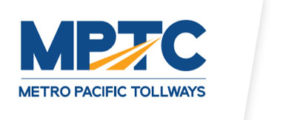A win-win solution for acquiring right-of-way
NLEX Connector Project
MANILA, Philippines — By facilitating travel and trade, roads provide people with opportunities to improve their lot and better their lives. But for NLEX Corp., the road-building subsidiary of Metro Pacific Tollways Corp. (MPTC), helping people better their lives often begin even before the road construction is finished.
The builder-concessionaire and operator of two major expressways that link Metro Manila to Northern and Central Luzon, the North Luzon Expressway (NLEX) and the Subic-Clark-Tarlac Expressway (SCTEX), NLEX Corp. continues to expand its already extensive network of tollways. One of the major road projects it is currently undertaking is the NLEX Connector, an eight-kilometer all-elevated tollroad that will be built above the Philippine National Railways (PNR) railroad tracks and connect (hence its name) NLEX with the South Luzon Expressway (SLEX).
Designed to extend the NLEX southward, this four-lane highway will follow the PNR tracks starting from the partially open Caloocan Interchange in Grace Park, Caloocan City (C-3 Road/5th Avenue), cut through central Manila, and cross Espa?a Boulevard toward the Polytechnic University of the Philippines (PUP) campus in Sta. Mesa where it will eventually link up with the Metro Manila Skyway Stage 3.
Once completed, the NLEX Connector is expected to benefit 24,000 vehicles daily and significantly ease the horrendous Metro Manila traffic by providing a congestion-free alternative to C5, EDSA, Roxas Boulevard and other major thoroughfares in the metropolis. It is also expected to cut the travel time between NLEX and SLEX, which today takes more than an hour, to just 15-20 minutes.
But one challenge ambitious infrastructure projects face is that while they undoubtedly benefit commuters and motorists upon completion, they invariably inconvenience a significant section of the population during construction. Often referred to as “project-affected persons” or PAPs, these are stakeholders who occupy the project sites where the projects will be built. For the NLEX Connector project, for instance, the Department of Public Works and Highways (DPWH) estimates that the project has to deal with about 2,957 families, based on a recent census.
These families, mostly informal settlers, occupy areas near the PNR tracks from Grace Park, Caloocan City and to the Estero de Maypajo in Tondo, to Espa?a Boulevard in Sampaloc, to the vicinity of the PUP campus in Sta. Mesa.
Informal settlers can naturally be expected to insist on their right to stay where they have lived for years and, thus, will resist any resettlement. Sometimes even courts get involved in the effort to stop an infrastructure project.
This is one reason why right-of-way acquisition (ROWA) has become a big stumbling block for many national infrastructure projects. ROWA issues cause major delays and, in some cases, have even led to the projects being deferred.
There are, of course, measures available to government and private infrastructure developers. For instance, there is RA 7279 or the Urban Development and Housing Act of 1992. Also known as the “Lina Law,” this act protects informal settlers but also stipulates proper procedures for the resettlement of informal settler families or ISFs. For national infrastructure projects including public-private partnership (PPP) projects, the affected local government units (LGUs) as well as certain national government agencies are required to cooperate with each other. The National Housing Authority (NHA) is mandated to implement resettlement of qualified ISFs with the support of the DPWH. At the LGU level, planning, programming and execution coordination efforts are done through the Local Inter Agency Committee or LIAC.
For its PPP expressway projects, NLEX Corp. recognizes and takes advantage of all these mandated measures, but it complements them with another, even more effective solution to the ROWA challenge: communication.
“Based on experience, the stakeholders who initially resist the project are those who have not been properly involved in the process,” Maximo S. Artieda, senior manager for resettlement of NLEX Corp.’s Project Development Department (PDD), said. “In situations like these, communication is the key.”
NLEX Corp. teams join face to face dialogues with affected families, in coordination with the concerned LGUs and the implementing agencies. Through these dialogues, the communities are invited to know more about the project’s implementation. The company teams also actively participate in LIAC activities and even follow these up with house-to-house visits during which individual families get more information about the project, including possible employment opportunities that will open up once construction starts. In hiring construction workers for its road projects, NLEX Corp. prioritizes PAPs.
“While these visits are technically the job of the government agencies and the local government units, we support them and provide more detailed information about the project. We work hand in hand with the implementing agencies and the LGUs,” Artieda explained.
“When we were starting pre-construction activities with the NLEX Connector project, we joined the DPWH ROWA teams and some families actually refused to let us in,” he said, relating one experience. “We realized many affected residents were not even aware of the project, so we had to literally conduct dialogues right there. With sufficient information, the communities opened up and many welcomed us to their homes,” Artieda said.
However, not everyone can be convinced to support a project through communication alone. “We handle opposition by immersing ourselves in the community when there is an opportunity,” Artieda said.
And while the resettlement of the ISFs remains the responsibility of the government, NLEX Corp. is always there to lend a helping hand. In fact, prior to the actual transfer, PDD personnel also monitors the construction of the resettlement sites where the displaced families will be transferred to ensure that these will be ready for their occupants.
Rodrigo E. Franco, MPTC president and chief executive officer, gave the rationale for this policy. “As good corporate citizens, we have to take into consideration the plight of those who have to give way to progress,” he said. “We try to help them when we can.”
